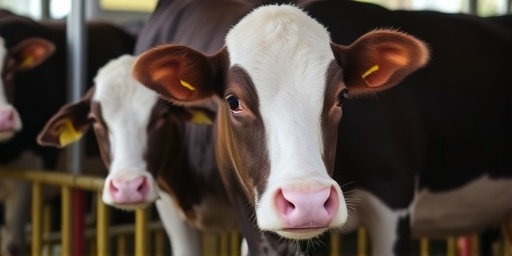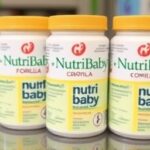SACRAMENTO, California – In a alarming development for public health and agriculture, state veterinarians have confirmed the presence of the highly pathogenic H5N1 Bird flu strain in dairy cows across multiple California farms, raising fears of the state’s first human case as workers show early symptoms under close watch.
- California Dairy Herds Quarantined After H5N1 Detection in Milk Samples
- Farm Workers Monitored for First Potential Human Case of Bird flu
- Social Media Explosion Tracks Bird Flu Fears in California
- Dairy Industry Braces for Economic Ripple Effects from H5N1 Outbreak
- Experts Outline Path Forward to Contain H5N1 and Prevent Pandemic
The California Department of Food and Agriculture (CDFA) announced the detections on Friday, marking the latest U.S. expansion of an outbreak that has already infected over 40 dairy herds nationwide since March 2024. Raw milk samples from affected dairy cows in Fresno and Tulare counties tested positive for H5N1, prompting immediate quarantines and culling of infected animals to curb spread.
“This is a serious situation that demands swift action,” said CDFA Secretary Karen Ross in a press briefing. “We’re working around the clock with federal partners to contain the virus and protect both animal and human health.” Social media platforms are ablaze with trending posts about Bird flu in California, amplifying concerns as videos of sick cows circulate widely.
California Dairy Herds Quarantined After H5N1 Detection in Milk Samples
The outbreak was first flagged when routine testing at a large dairy operation in California’s Central Valley revealed high viral loads of H5N1 in milk from symptomatic cows. Animals exhibited reduced milk production, lethargy, and respiratory distress – classic signs of avian influenza adapting to mammals.
According to the CDFA, four herds totaling over 1,200 dairy cows are now under quarantine in Fresno County alone, with trace-back investigations underway to identify potential links to wild birds, a primary vector for the virus. “The H5N1 strain found here is the same clade 2.3.4.4b that’s been devastating poultry flocks globally,” explained Dr. Annette Jones, state veterinarian. “Its jump to cows is unprecedented in scale, but pasteurization kills the virus, so commercial milk remains safe.”
Testing protocols have been ramped up: Farms must now submit weekly milk samples, and all new animals require pre-movement testing. Since the U.S. Department of Agriculture (USDA) confirmed the first bovine case in Texas in late March, over 50 herds in 10 states have been affected, with California now joining Idaho, Michigan, and others on the list.
- Key Stats on California Outbreak:
- 4 confirmed infected herds (as of October 10, 2024)
- 1,200+ cows quarantined
- 0 deaths in cows reported yet, but milk yield down 20-40%
- 200 farm workers screened for symptoms
Farmers are bearing the brunt: One Tulare County operator, speaking anonymously, told reporters, “We’re losing gallons of milk daily. Dumping it hurts, but we can’t risk spreading this.” Compensation programs from the USDA offer up to $2,000 per infected cow culled, but critics say it’s insufficient amid rising feed costs.
Farm Workers Monitored for First Potential Human Case of Bird flu
As H5N1 spreads among dairy cows, health officials are zeroing in on the human risk. The Centers for Disease Control and Prevention (CDC) reports three mild human cases nationwide linked to infected cows – all in farm workers exposed to raw milk or sick animals – with symptoms like conjunctivitis and flu-like illness.
In California, the Department of Public Health (CDPH) has screened over 200 dairy workers, identifying five with mild eye irritation now under antiviral treatment and quarantine. “No confirmed human case yet, but we’re not taking chances,” stated CDPH Director Dr. Tomás Aragón. “These individuals had direct contact with unpasteurized milk, and we’re testing nasal swabs aggressively.”
The virus shows low human-to-human transmission so far, with a case fatality rate of 52% in rare severe infections historically. However, experts warn of mutation risks. “Genomic sequencing of cow-derived H5N1 shows adaptations for mammal binding, heightening spillover concerns,” said virologist Angela Rasmussen of the Vaccine and Infectious Disease Organization.
- Workers issued PPE: Gloves, goggles, N95 masks mandatory on affected farms.
- Antivirals like Tamiflu stockpiled for high-risk exposures.
- Symptom hotline launched: 1-800-BIRD-FLU for reporting fever, cough, or pink eye.
Public health campaigns urge avoiding raw milk – a niche but growing trend in California, where unpasteurized products outsell pasteurized in some farmers’ markets despite warnings.
Social Media Explosion Tracks Bird Flu Fears in California
The news has ignited a firestorm online, with #BirdFluCA trending on X (formerly Twitter) and TikTok, amassing over 500,000 views in 24 hours. Viral clips of coughing cows and infographics on H5N1’s pandemic potential have drawn millions, blending facts with misinformation.
“Is bird flu in milk going to kill us all?” queried one top post with 100K likes. Fact-checkers from PolitiFact and Snopes have debunked claims of widespread contamination, emphasizing pasteurization’s efficacy. Yet, searches for “bird flu symptoms humans” spiked 300% in California per Google Trends.
Influencers and wellness gurus promoting raw milk diets face backlash. One popular podcaster retracted advice after CDFA warnings, saying, “I trust science – pasteurized only from now on.” This digital frenzy echoes past scares like mad cow disease, underscoring social media’s role in shaping public perception during outbreaks.
Dairy Industry Braces for Economic Ripple Effects from H5N1 Outbreak
California, the nation’s top milk producer at 19% of U.S. supply, faces cascading impacts. Quarantined herds mean diverted milk – over 500,000 gallons discarded weekly – pressuring processors and hiking prices. Fluid milk futures on the Chicago Mercantile Exchange jumped 5% post-announcement.
The California Milk Advisory Board estimates potential losses at $50 million monthly if cases proliferate. “We’re diverting to cheese and butter production, but consumer confidence is key,” said CEO Rob Vandenheuvel. Retailers like Whole Foods have posted signage: “All milk pasteurized and safe.”
Broader agriculture feels the pinch: Poultry losses from H5N1 exceed 100 million birds since 2022, costing $4 billion. Dairy’s entry amplifies biosecurity needs, with investments in ventilation, wild bird netting, and wastewater surveillance surging.
International trade looms large; Mexico and Canada scrutinize California exports. “Enhanced testing at borders will protect our markets,” noted a Canadian official.
Experts Outline Path Forward to Contain H5N1 and Prevent Pandemic
Looking ahead, federal and state agencies are mobilizing a multi-pronged response. The USDA is accelerating a cattle vaccine trial, with Phase 2 data expected by Q1 2025, potentially offering 80% protection. Meanwhile, the CDC pushes vaccine updates for seasonal flu shots to counter H5N1 co-infections.
“Surveillance is our frontline defense,” emphasized USDA Chief Veterinary Officer Dr. Rosemary Sifford. “One Health approach – linking animal, human, and environmental monitoring – will be crucial.” Plans include genomic dashboards for real-time tracking and AI models predicting spread via migratory birds.
Public steps urged: Cook poultry thoroughly, avoid wild bird contact, and report sick livestock. For dairy consumers, the mantra is clear: Stick to pasteurized products. As winter migration peaks, officials warn of heightened risks, but optimism prevails with contained U.S. human cases to date.
Stakeholders from farms to Capitol Hill are aligning for resilience. Governor Gavin Newsom pledged $10 million in emergency aid for affected producers, signaling California’s resolve. With vigilant action, experts believe this outbreak can be managed without escalating to a broader crisis.









